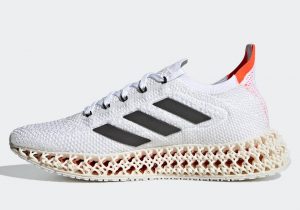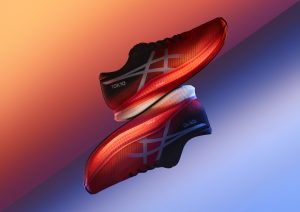The sports and leisure industry has always been a showcase of trendsetting products and processing techniques from the plastics and rubber industries. The past Olympic Games served as the world premiere of sportswear, footwear, sports equipment and structures used in the various competitions. It cannot be denied that the introduction of new products during the Olympics season has done much to boost the revenues of the sports industry globally, and create an awareness on how the plastics and rubber industries continue to spearhead in developing new materials and production processes that have set new standards and broke records in sports performance.
With the Tokyo Olympics 2020, the innovations continue as key players in the plastics and rubber industries shift their gear on what can be done to further improve the performance of the athletes, build more conducive sports venue and create sporting goods with better features. Even with the COVID-19 pandemic, these industries stayed focused on creating new products, and Olympics 2020 is an example of how plastics and rubber have been making headway into the highly competitive world of sports.
The Olympics has become a showcase of advanced plastics and rubber materials. In Rio Olympics 2016, structures were built with construction materials consisting of plastics such as the Arena da Juventude or Youth Arena, where the facades were made with PVC composite membranes for wind resistance and proper ventilation. In the Tokyo Olympics 2020, aside from the podiums for the awarding ceremonies that are made of recycled plastic, another popular venue is the Ariake Gymnastics Center, where the competitions in gymnastics, rhythmic gymnastics and trampoline are held. The center showcased several innovations from Dow including technologies for coatings and wiring that are applied to optimize building performance and protect the temporary Olympic venue, and for an additional 10-year period after when it will be used as a state-of-the-art convention and exhibition center.
Dow’s PRIMAL™ Acrylic Polymer is applied to protect the gymnastics center’s interior walls, providing long-term durability and excellent adhesion, while ELASTENE™ Elastomeric Wall Coatings help provide a solution for the exterior with excellent dirt pick up resistance and mechanical property balance. The water-based coatings system is formulated with DOWANOL™ Glycol Ethers to optimize formulation stability and performance, while meeting low-VOC requirements. To ensure uninterrupted network broadcasts in real-time and without interruption or signal loss, Dow’s proven solutions in telecommunications space, AXELERON™ Compounds, are used as an insulation layer in telecommunication wires to aid in ensuring the stadium’s transmission speeds and signals are as efficient and reliable as possible, reducing the risk of signal loss.
 For the eight consecutive Olympic Games, , Mondo was chosen to supply athletics tracks at the Tokyo Olympics 2020. For the tracks, the Mondotrack WS was developed and touted as the most technologically advanced athletic track in the world produced via a two-phase vulcanization process that incorporates special rubber granules. This increases the surface’s elasticity and helps the runners achieve top performance by reducing fatigue and allowing for better control over stride length and movements.
For the eight consecutive Olympic Games, , Mondo was chosen to supply athletics tracks at the Tokyo Olympics 2020. For the tracks, the Mondotrack WS was developed and touted as the most technologically advanced athletic track in the world produced via a two-phase vulcanization process that incorporates special rubber granules. This increases the surface’s elasticity and helps the runners achieve top performance by reducing fatigue and allowing for better control over stride length and movements.
Key players in the plastics and rubber industries have been racing towards developing the perfect sports shoes for various competitions with a purpose of setting new records that will capture the sports industry’s attention. The sports technology has become more advanced, thanks to the R&D programs of those engaged in materials production that have yielded footwear matching the demand for comfort, weight reduction and resistance.
Nike has stepped up its footwear technology with its ZoomX foam that is soft and ultra-lightweight and can provide 75% energy return and deliver improved running performance. For the Tokyo Olympics, Nike’s Vaporfly range now includes the ZoomX Vaporfly NEXT% and the Zoom Vaporfly 4%. The ZoomX Vaporfly NEXT% boasts of a lighter design and faster feel with enhanced cushioning made possible by the integration of VaporWeave material at the top for breathability and comfort; while the full-length carbon-fiber plate at the midsole helps prevent energy loss in toe bends. The Vaporfly sports shoes user polyether block amide (PEBA) foam and elastomeric polymer (EVA) for lighter weight and improvement performance.
Nike also debuted its sustainable VaporMax 2020 – an environment-friendly sneaker made from 75% recycled content prior to the Olympics 2020. 
The Adidas 4DFWD “Tokyo” is a running model that also put emphasis on the performance and sustainability. These running shoes ride on 17 years of Adidas experience, and highlighted by a 3D-printed 4D midsole that redirects energy forward for easier gait. The Primegreen upper is made with a series of high-performance materials with 50% recycled content.

The Adidas 4DFWD “Tokyo” features Primegreen upper made of high-performance materials with 50% recycled content
Asics also debuted its new sports shoes line, among them, its high-performance running shoes, METASPEED Edge. The model is scientifically designed with the goal of helping athletes finish at the top of their game. The METASPEED model put into action Asic’s lightweight and soft FF Blast Turbo cushioning with a carbon plate for greater speed. The upper, which is lighter and more streamlined, is made from 100% recycled polyester.

Asics METASPEED Edge is lightweight and features soft cushioning
with a carbon plate for greater speed
As in other fields, the sports industry is made up of different segments that manufacture various products. New technologies developed by companies engaged in plastics production have given the sports industry a winning streak. Take the case of 3D printing which has entered the sports sector and this year’s Olympics saw highly advanced 3D printing technology applied in the medal awarding podium – designed by Professor Tanaka Hiroya, an expert in digital fabrication from the Keio University in Tokyo. Another contribution is the custom pistol grip created using Zortrax’s 3D printing and surface finishing technology Olympian silver medallist Celine Goberville who is competing for the 10m air pistol shooting event. The design was developed by Athletics 3D.
At CHINAPLAS 2021, many new developments in sportswear, footwear and sports equipment were demonstrated by leading companies producing engineering plastics and high-performance rubber, and those providing efficient manufacturing solutions. In 2022, CHINAPLAS will once again showcase industry-leading trends in the sports & leisure industry. CHINAPLAS 2022 is scheduled to take place from April 25-28, 2022 at the National Exhibition and Convention Center (NECC), Hongqiao, Shanghai, PR China.
For more information, please visit www.ChinaplasOnline.com.







